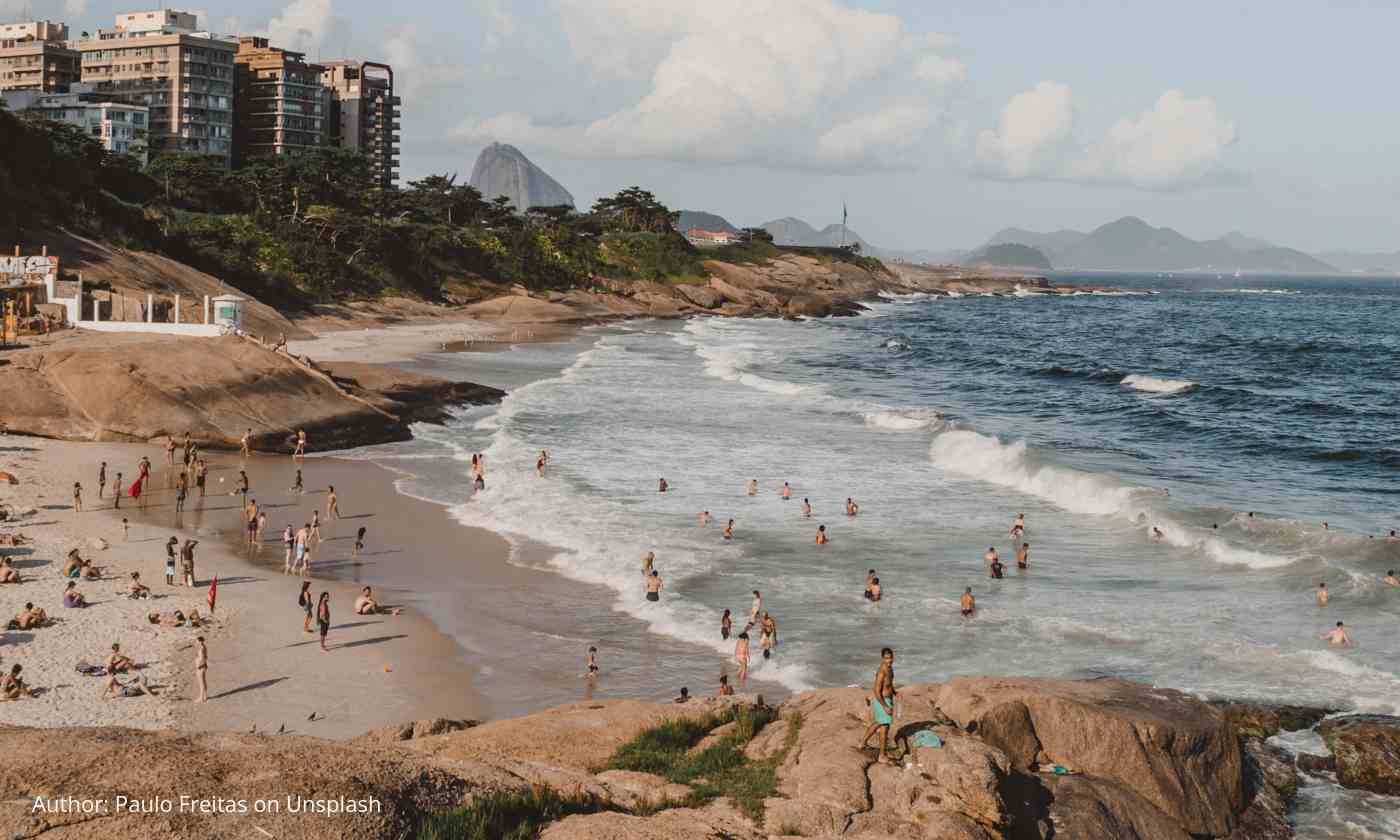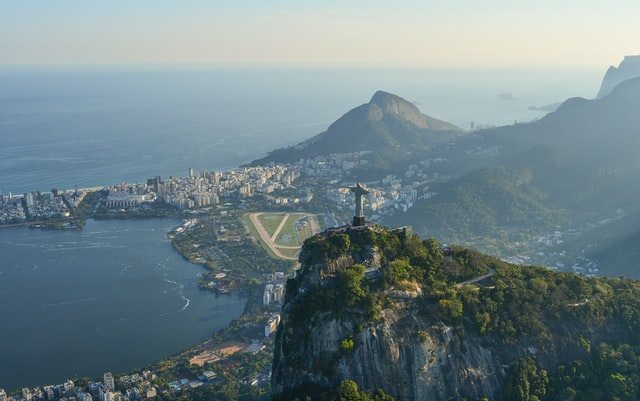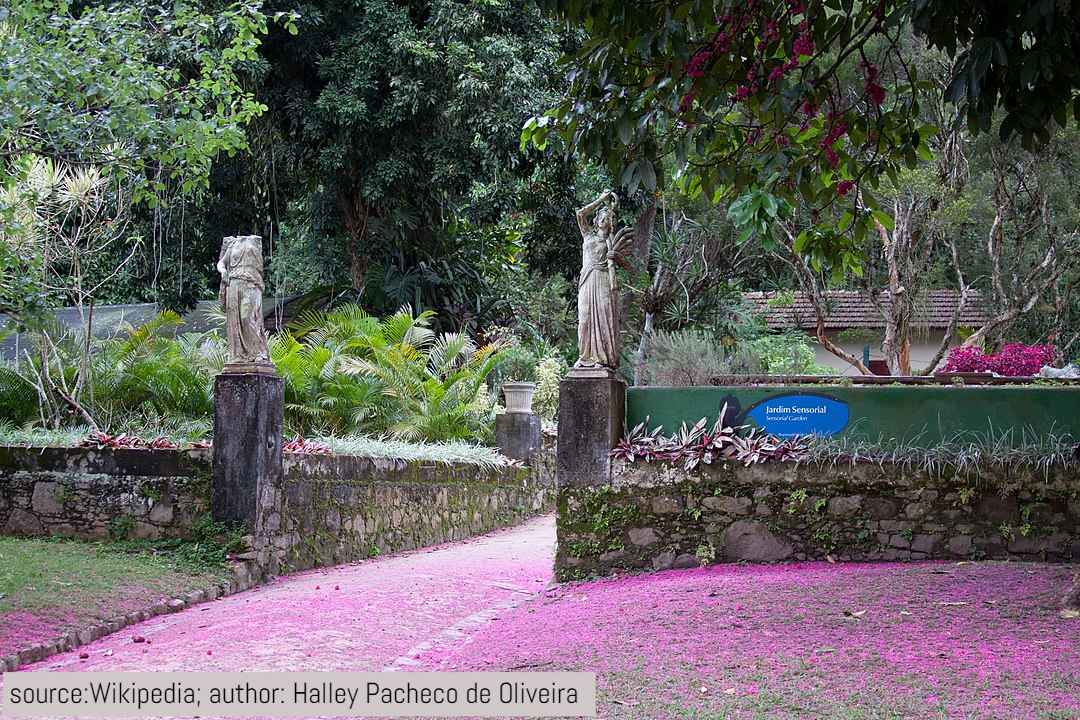Rio Beaches
Share this attraction
Back

Rio Beaches
Rio De Janeiro
Rio beaches - the most important information
It is believed that Brazil is home to more than 2,095 beaches. The most popular ones can be found in Rio, with fantastic nightlife, stunning beach views, pristine water, and lots of space for sports. Beloved beaches Copacabana and Ipanema are not only neighbors, but they also stand out due to their tourist offer and appeal. Let's have a look at what makes them unique.
About Copacabana
Copacabana is a gorgeous neighborhood in the southern part of Rio de Janeiro, mostly known for its stunning balneairo beach. This Atlantic shore beach is around 4 km long, with an iconic black and white promenade. Copacabana's history began in 1970 thanks to a landfill that influenced the beach area. Today, it extends from Avenida Atlantica to the famous Copacabana Fortress you ought to see. An abundance of things to do and see makes this beach an item on many bucket lists. But, did you know that:
About Copacabana
Copacabana is a gorgeous neighborhood in the southern part of Rio de Janeiro, mostly known for its stunning balneairo beach. This Atlantic shore beach is around 4 km long, with an iconic black and white promenade. Copacabana's history began in 1970 thanks to a landfill that influenced the beach area. Today, it extends from Avenida Atlantica to the famous Copacabana Fortress you ought to see. An abundance of things to do and see makes this beach an item on many bucket lists. But, did you know that:
- Copacabana used to be called Sacopenapã, the name given by the Tupi indigenous residents of Rio de Janeiro. Copacabana's name means "observatory of the blue", and there is also a town in Bolivia with the same name.
- New Year celebrations in Rio are a big deal, especially on Copacabana beach. The fireworks show that welcomes the start of the New Year is one of the largest in the world.
- It became dog-friendly in 2019; If you're traveling with a dog, we recommend you check the southern part of the beach famous amongst dog lovers.
- The pattern on the Copacabana promenade originated in Portugal, and Brazilian landscape architect Roberto Burle Marx designed it. A mosaic look that mimics the waves became a Copacabana symbol, and you'll find it on many souvenirs. It was built in the 70s, but Portuguese pavements have had this design since the 30s.
- This beach played a significant role in the 2016 Olympics, as it was the site of all volleyball matches.
What to see and do at Copacabana?
Besides sunbathing, enjoying the hot, clean sand and the atmosphere, there is a lot to see and experience in this paradise, Rio spot. Don't miss out on:
Besides sunbathing, enjoying the hot, clean sand and the atmosphere, there is a lot to see and experience in this paradise, Rio spot. Don't miss out on:
- Monument of Carlos Drummond de Andrade: Respected poet and writer from Brazil deserved this bronze statue placed on a bench, overlooking the people passing by.
- Fortresses: South and East ends of the Copacabana beach are adorned by fortresses worth visiting. On the East end, you'll find Fort Duque de Caxias, a restored military fort with an ecological walk of the Atlantic Forest protected area; in the southern part, Forte de Copacabana houses the Army Historical Museum.
- Parque da Chacrinh: A park filled with forest life and vegetation
- Copacabana night market
How to get to Copacabana?
Reaching Copacabana won't be a problem. There are close metro stations, direct bus lines, and taxi stations. You can also walk to it and explore Rio on foot simultaneously if you don't mind an 8km walk.
Reaching Copacabana won't be a problem. There are close metro stations, direct bus lines, and taxi stations. You can also walk to it and explore Rio on foot simultaneously if you don't mind an 8km walk.
- By metro: Take metro line L1+ L4 to Cardeal Arcoverde station
- Cable car: The station closest to the beach, just a 3-minute walk away from it, is Güven Sokak; you need to take MİNİBÜS: BL-401 to reach it.
- Bus lines: The closest bus stops are Güven Sokak / Ümranıye Yönü on line 131A, Fatih Bulvarı / Ümraniye Yönü on line 11ÜS, and Fatih Bulvarı on lines 14S, 18A, 18UK, 18YS, 19SB.
About Ipanema
It is located in the South Zone of Rio de Janeiro, tucked between Arpoador and Leblon neighborhoods. The land at first was a staple place for Indian people that lived in the area during the colonization times, and the first stage of urbanization was put in motion in 1902 when a streetcar line was built to attract more people. In the 60s, the neighborhood around the beach began to take shape, with infrastructure starting to change. It took decades for Ipanema to become the charming spot we know today, with a 2.6 km long beach with clear sand, incredibly alive at night. Ipanema is also iconic because:
It is located in the South Zone of Rio de Janeiro, tucked between Arpoador and Leblon neighborhoods. The land at first was a staple place for Indian people that lived in the area during the colonization times, and the first stage of urbanization was put in motion in 1902 when a streetcar line was built to attract more people. In the 60s, the neighborhood around the beach began to take shape, with infrastructure starting to change. It took decades for Ipanema to become the charming spot we know today, with a 2.6 km long beach with clear sand, incredibly alive at night. Ipanema is also iconic because:
- It was immortalized by a bossa nova song The girl from Ipanema, written by Antônio Carlos Jobim and Vinícius de Moraes. The song lived many lives, both in Portuguese and English, when it was made popular by none other than Frank Sinatra.
- The Beach area around Farme de Amoedo is known as the LGBTQIA+ spot, where people can proudly and freely wave their rainbow flag. It got its status in the 80s when local openly gay artists chose it as a meeting spot.
- The beach is divided into distinctively different posts, 12 of them. The beach itself takes up posts 7 to 10. If you want to meet the artists and hipsters, we suggest you visit Posto 9, known as Cemeterio dos Elefantes by locals
What to see and do at Ipanema?
You can't say you've been to Rio if you didn't visit Ipanema. We have to warn you about the water, though, as waves that hug the beach can be pretty rough and high. If you're not a great swimmer, ask the locals to direct you to the closest and safest areas. The cleanliness of the sand makes this beach a great spot for families with kids, tourists looking for a lot of space to sunbathe, and sports lovers. This is your chance to try a famous Brazilian beach sport, futevôlei, a mix of soccer and volleyball. While you're visiting Ipanema and its surroundings, don't miss out on:
You can't say you've been to Rio if you didn't visit Ipanema. We have to warn you about the water, though, as waves that hug the beach can be pretty rough and high. If you're not a great swimmer, ask the locals to direct you to the closest and safest areas. The cleanliness of the sand makes this beach a great spot for families with kids, tourists looking for a lot of space to sunbathe, and sports lovers. This is your chance to try a famous Brazilian beach sport, futevôlei, a mix of soccer and volleyball. While you're visiting Ipanema and its surroundings, don't miss out on:
- Feira Hippie de Ipanema: Perfect place to find the souvenirs, this Sunday market gathers crafty people at the former hippie hangout post, where they sell handmade art, jewelry, clothes, and other cute things.
- Parque Garota de Ipanema: Located between the Copacabana and Ipanema beaches, this park is a city oasis that regularly hosts concerts during the busiest part of the season. It's gorgeously decorated in a way that honors nature but gives people entertainment spots as well, such as skating rinks, pavilions, and playgrounds for kids. It is also pet-friendly!
- Tom Jobin statue: As you walk along the Ipanema promenade, you'll find a few interesting statues dedicated to Brazilian artists. Arguably the most famous one is the statue of previously mentioned composer Tom Jobim, who is captured in motion and with his beloved guitar.
- Shopping at Ipanema: The area is infamous for the luxury shopping spots, especially the Quadrilátero do Charme district. This is where you'll find stores of world-famous brands, such as Hermès.
How to get to Ipanema?
Ipanema and Copacabana are neighbors, so you can easily walk from one to the other. Or, if you wish to use public transportation to go directly to Ipanema, there are many choices.
Ipanema and Copacabana are neighbors, so you can easily walk from one to the other. Or, if you wish to use public transportation to go directly to Ipanema, there are many choices.
- By metro: Line L1+L4 will take you to the closest station, General Osorio.
- By bus: Stations closest to Ipanema are BRS 2 - Joana Angélica to which you can take lines 415, 426, 432, 433 and 436; BRS 2 - Farme De Amoedo on line 584 or lines 557, 558-INT6, 108-TRO6 and 2335 to BRS 1 3 - Vinícius De Moraes station.
Location
Learn more about this destination
Discover the beauty of the destination through blogs that highlight the most famous landmarks, hidden gems, and provide travel tips for visiting this destination. Embark on an adventure through the stories of experienced travelers.




















